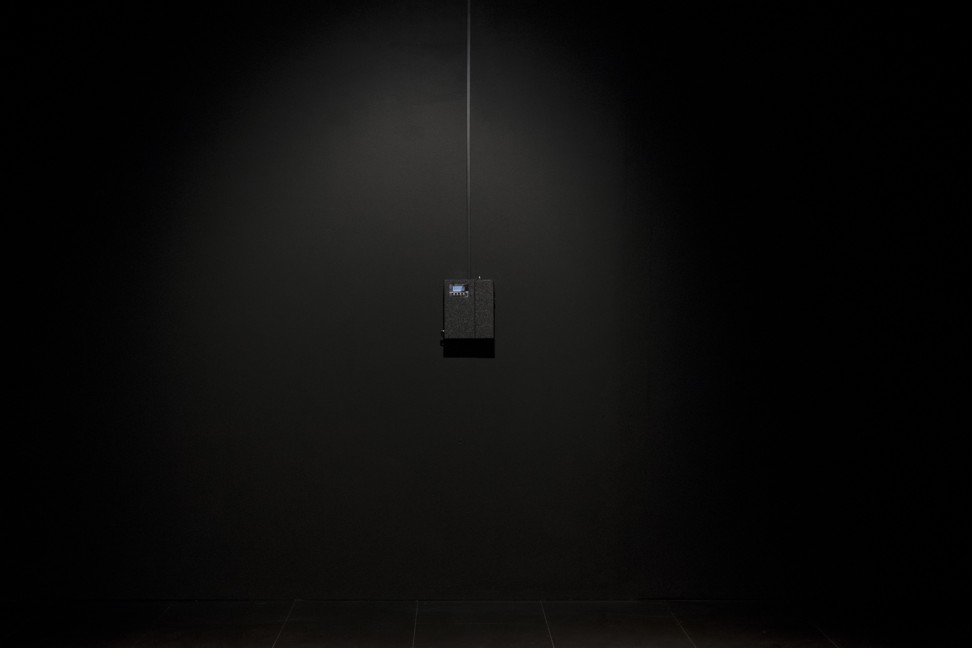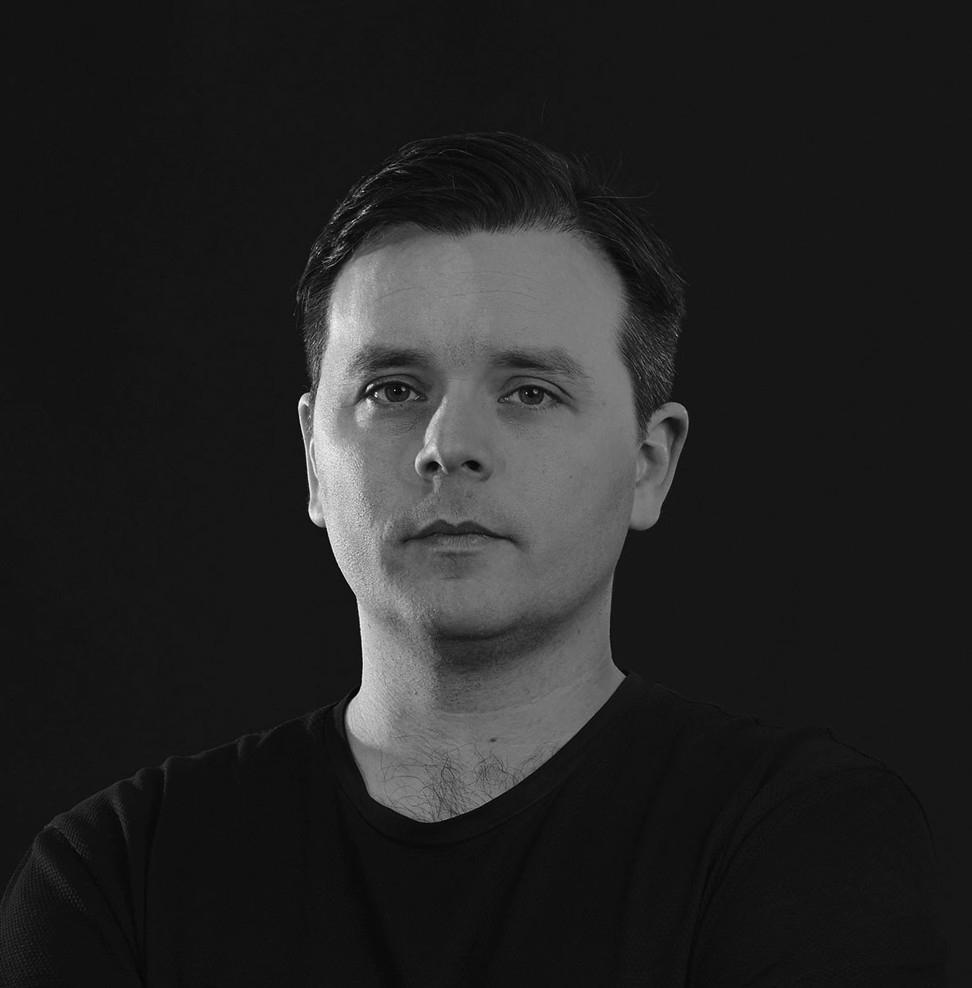
Conceptual art goes molecular with works you can smell but can’t see, and one that ‘sees’ you
- Immersive exhibition features fragrance molecules pumped from electronic diffusers, and an array of test tubes growing retinal cells like those in our eyes
- ‘As a sculptor I have always been interested in transforming materials,’ says Detroit-based Sean Raspet, who wants art to connect better with reality
Sean Raspet is a 38-year-old conceptual artist in Detroit who used to work with hair gel. These days, his material of choice is even more unconventional. He has literally stripped his practice down to the molecular level, as he considers the role of art in an age dominated by global capitalism, environmental concerns and quantum leaps in technology.
His first Hong Kong solo exhibition is called “New Molecules and Stem Cell Retinoid Screen”, a literal description of the two works he has brought to Empty Gallery’s minimally lit space.
The “New Molecules” refer to three fragrance molecules Raspet has developed with Zheng Shengping, associate professor of chemistry at Hunter College in New York. These are entirely new smells that have not existed before; each one is pumped out from electronic diffusers mounted on the walls of three adjoining rooms.
Visitors move through Fructaplex©, a fruity, plasticky smell reminiscent of artificial car air-fresheners, to Sylvoxime©, which has a comforting sylvan note of a walk through the forest, before hitting the intense and complex smell called Hyperflor©, which Raspet describes as somewhere between fresh flower petals and putrid, overripe vegetation.

This is immersive art that is still sculptural in terms of its molecular structure and how it is experienced spatially (the scent changes depending on where you stand). A crucial characteristic of the work is that each scent can be sold to perfumeries as a commercial raw material.
The science of making new smells has existed since the late 19th century, and the first commercial perfume to use synthetic molecules was Guerlain’s Shalimar, which came onto the market in 1925 and is still in production. Its secret sauce is C₆H₃CHO, or ethylvanillin – a made-in-the-lab vanilla smell that is much stronger than the natural kind, and much cheaper.

That Raspet, a former flavour engineer in the food industry, got into scents is down to the global financial crisis. Amid the turmoil and fear, he became frustrated with how detached art was from the real economy, and real people.
“I started really thinking about why art is separate from the economy in the way it circulates. Sure, art can be a commodity that can be speculated on, but typically, the way artists work is not scalable, and art cannot be split up and spread around. It only reaches a small number of people,” he says. By comparison, our bodies react very directly to scents and tastes and they are more likely to have reach, he points out.
He also wanted to tackle environmental issues in a meaningful way, rather than just talking, or making a piece of art about sustainability while producing more waste. The result was Nonfood, a company he set up a few years ago. It makes the Nonbar – a nutritional bar made with algae and not much else, and hence guilt-free in terms of its carbon footprint. (It is only available in the United States at the moment, but we did try a sample. The texture resembles a brownie and the flavour is strangely minty.)

“As a sculptor I have always been interested in transforming materials. And it is how a lot of the economy functions – turning materials into other things,” Raspet says.
People experience taste, and the scents of his new molecules, differently, just as any work of art can be received differently by different people.
Transformation and perception are very much the themes of Raspet’s other work on show in Hong Kong.
We are used to looking at screens, but here you have a screen arrangement that is receiving rather than projecting. It is a way of inverting our usual relationship with screens and using a human kind of feature to look at us
Screen (EP1.1 iPSCs stem cell line-derived human retinal organoids) (2019) is a square array of 36 test tubes containing a pink culture in which a single retinal organoid grows. Scientist Kiara Eldred, from Johns Hopkins University, who is collaborating with Raspet, explains that organoids are miniature versions of organs and useful for studying how the body works.
The cells in this particular work, barely visible as grey dots in the pink liquid, were originally skin stem cells that she reprogrammed to grow as retinal cells, hence the abbreviation iPSCs in the artwork’s title – it stands for induced pluripotent stem cells.
The amusing thing about this work is how the cells are developing the ability to receive light information – or, as Raspet points out, to “see” us.

“We are used to looking at screens, but here you have a screen arrangement that is receiving rather than projecting. It is a way of inverting our usual relationship with screens and using a human kind of feature to look at us,” he says.
Eldred, who was a stage technician before becoming a scientist, is keen to take the artistic application of her organoids further. She and Raspet are now venturing into truly “creepy” territory, she says. To get past the limitation of the iPSCs – slow-growing, and set in their shapes – they are experimenting with retinoblastoma cells extracted from a form of retinal cancer.
“Cancer cells grow a lot faster and you can grow them in sheets or on different surfaces, while they produce the same proteins that receive light,” she says.
This is an exhibition where the art is difficult to spot, but ultimately unmissable for opening up the way we think about what art is.
Sean Raspet: New Molecules & Stem Cell Retinoid Screen, Empty Gallery, 18/F and 19/F (Entry through 19/F), Grand Marine Center, 3 Yue Fung Street, Tin Wan, Aberdeen, Hong Kong. Tue-Sat, 11am-7pm. Until September 7

